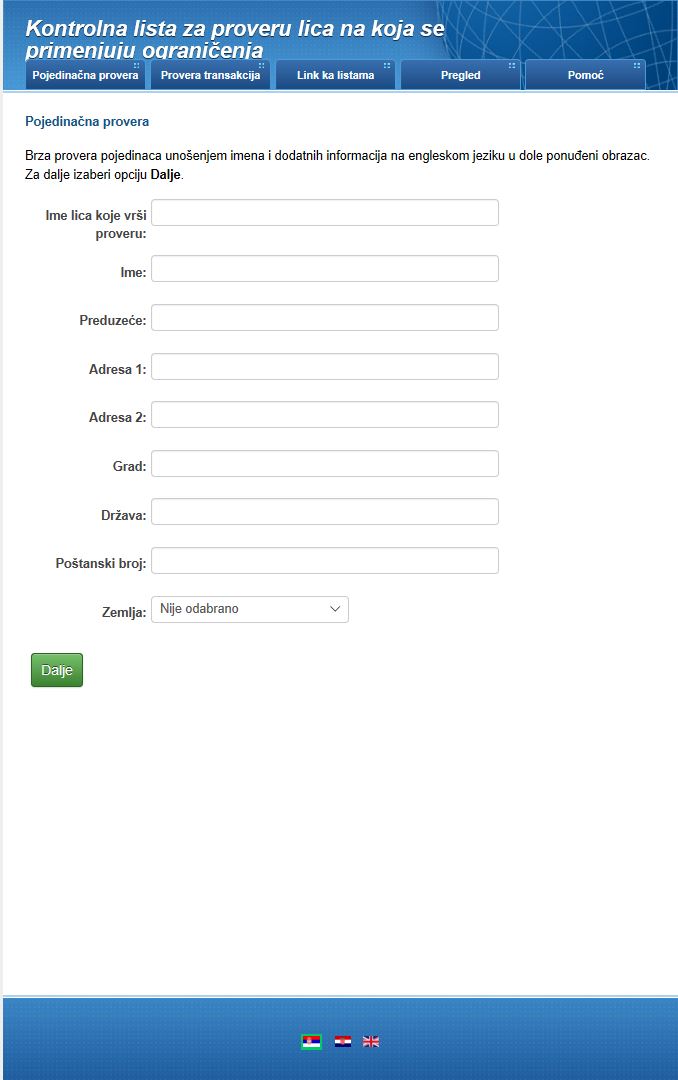This Internal Compliance Program (ICP) Guide provides web-based training and job-aids to assist industry in complying with national and international strategic trade control (STC) requirements. The ICP Guide provides information and guidance intended to assist your enterprise in establishing, maintaining, and enhancing an ICP. The guide promotes strategic trade control (STC) compliance best practices and recommends eight, “core” elements of a comprehensive and effective ICP (based on international standards). The tool also provides five, “additional” or discretionary ICP elements for consideration, as well as transaction screening and evaluation tools, reference materials, ICP implementation aids, and industry sector-specific resources designed to further guide and support your enterprise in developing and implementing an ICP and ensuring compliance with all applicable STC laws and regulations.
The ICP Guide is separated into two distinct parts:
PART 1: ICP Informational Materials
Part 1 of the ICP Guide is comprised of informational content that is intended to raise your enterprise’s awareness and knowledge of STC and ICP-related concepts and terms.
Navigating and Using the Site
This section is designed to familiarize users with the organization, features, and capabilities of the ICP Guide and to facilitate navigation and use of the ICP content and materials.
Introduction to Internal Compliance Programs (ICP)

The section is intended as a primer and the content is designed to stimulate the user’s thinking about how STC can potentially impact your business and whether an ICP is appropriate for your enterprise. This portion of the guide seeks to familiarize users with basic strategic trade control concepts, the types of commodities and activities subject to regulation and restriction, the types of industry stakeholders and sectors impacted by STC, and the role industry plays in preventing the unauthorized transfer or diversion of strategic items. The section explains the purpose and importance of internal compliance programs, the advantages and benefits an ICP can afford to businesses, and the costs associated with STC non-compliance. This section also discusses the importance of customizing your enterprise’s ICP in order to maximize the program’s usefulness and effectiveness. In addition, this section of the guide contains the Glossary of Terms that provides definitions for over 150 of the relevant terms used throughout the ICP Guide.
Elements of an Internal Compliance Program (ICP)
This section is intended to enhance the user’s knowledge and understanding of the elements that comprise a comprehensive and effective ICP. This section provides a thorough description of each of the eight, “core” elements that should be present in any ICP as well as the five, “additional” elements that may warrant consideration from certain enterprises, organizations, or industry sectors. The purpose of each element and the tasks that must be undertaken to implement each element are discussed in detail.
PART 2: ICP Implementation Tools
Part 2 of the ICP Guide enables users to craft policies and procedures that can guide the implementation of the ICP. This portion of the guide will assist your enterprise in drafting an ICP Manual of STC compliance processes and procedures. Part 2 also contains an array of resources that can be utilized by employees that maintain STC compliance functions to better implement your enterprise’s ICP.
Developing an ICP Manual
This section of the ICP Guide guides you through the process of writing a clear and comprehensive ICP Manual based on the core elements of an ICP that are defined in Part 1. The guide provides MS Word® templates that enable the user to create an ICP Manual that defines the enterprise's policies toward strategic trade control and provides step-by-step guidance for implementing STC-related procedures within your enterprise. The guide provides a template for each element of the ICP that can be edited and modified to reflect your enterprise's specific ICP policies and procedures. The templates provide instructions for the person(s) responsible for writing the ICP Manual and identify specific content that should be customized by your enterprise. When completed, your enterprise will have created a custom-tailored ICP Manual that can serve as the foundation of your organization’s ICP and future trade compliance efforts. The ICP Manual can be printed, bound, and distributed to all key personnel and departments within your enterprise.
Implementation Resources
The “Implementation Resources” section of the guide provides users with a variety of compliance resources and job aids that are designed to assist in implementing your enterprise’s ICP. The resources can be used to educate or train your enterprise’s employees or to enhance implementation of the policies and procedures that underpin your ICP. The implementation resources are organized under the following sub-headings:

Industry Sector-specific Tools
The "Industry Sector-specific Tools" section enables certain users to customize their ICP, based on the types of strategic items or activities/services they deal in. This section of the guide provides additional resources and guidance for chemical suppliers; technology exporters; academic/ research organizations; trade facilitators and shippers; and defense manufacturers. This section includes “Technology Transfer Guidelines” to assist enterprises that conduct tangible and intangible transfers of controlled technology; “Shippers Guidance” to assist trade facilitators and entities from the shipping industry; as well as other compliance resources and guidance that is geared specifically toward academic/research organizations, defense manufacturers, and chemical suppliers. If applicable to your enterprise, the content in this section can be utilized to tailor your ICP and account for the unique challenges and risk factors facing your particular industry sector.
Restricted Party Screening Tool (RPST) and the Control List Search Tool (CLST)
Part 2 of the ICP Guide also includes two, searchable databases known as the Restricted Party Screening Tool (RPST) and the Control List Search Tool (CLST).
The Control List Search Tool (CLST) is a keyword search engine that allows the user to identify the correct commodity classification number (CCN) for specified goods or technology. The CLST contains an index of strategic goods and technologies, drawn directly from the EU’s “List of Dual-Use Items” and “Common Military List” or your country’s national control list(s). By entering a keyword(s), the tool will display results grouped according to subject hierarchy and classification number. Users can screen the technical specifications of an item against the control parameters described in the control list to see if there is a match and determine the most appropriate control list entry. By clicking on the results, the tool will display all relevant information, including full text of the list entry (including technical notes), definitions of terms, and in some cases, it will provide pictures of the controlled item, a rationale for control, and the associated Combined Nomenclature code(s). Still, the user is ultimately responsible for determining whether the item meets or exceeds the technical parameters of control associated with a particular control list entry and then assigning the appropriate CCN. The CLST is a valuable tool for your enterprise and can be used to classify new commodities or determine whether activities your enterprise engages in may be subject to any licensing or regulatory requirements.

The Restricted Parties Screening Tool (RPST) allows users to conduct a level of due diligence to ensure that any and all parties to a transaction (including “trade intermediaries”) are properly screened against officially published restricted parties lists. Users may search for an individual, entity, or company; search all parties to the transaction, or upload a batch file to screen a database of customers. Every screening generates a comprehensive report with detailed information on the screening and the screening results, which the user can print, save, or email. The RPST is a critical compliance resource that can enable your enterprise to effectively implement the transaction screening element of your ICP. The RPST can help to ensure that your enterprise does not conduct business with restricted/prohibited entities or individuals and it will allow your enterprise to retain a record of all screening measures undertaken for a given transaction.
It is recommended that users take the time to systematically review and evaluate each section of the ICP Guide. This ICP Guide promotes strategic trade compliance “best practices,” but it is recommended that you use this information as a starting point to develop and implement an ICP that uniquely addresses the needs and areas of risk of your enterprise. While your enterprise may not immediately recognize the need or value of certain, recommended ICP elements identified as part of this guide, establishing and adopting trade compliance best practices now will allow your ICP to more easily adapt and expand over time to ensure compliance with evolving STC requirements or business demands.
Users should begin by reviewing the ICP informational materials before moving on to examine the ICP implementation tools portion of the guide. When using the guide, you should constantly be assessing how the recommended compliance policies, procedures, safeguards, and practices can be integrated into your enterprise’s existing operations. The resources that are available within the guide can be used by your enterprise to strengthen your internal compliance efforts and safeguard your business interests. When all the parts of the ICP are utilized in concert with one another, the ICP Guide can enable your enterprise to: